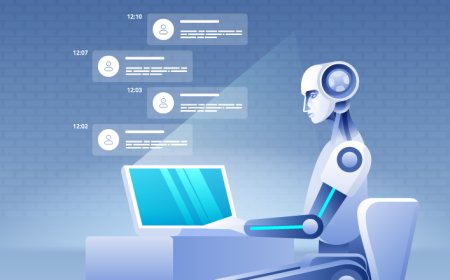How to Stay Safe from Ransomware, Phishing, and Cyber Attacks
Explore emerging cybersecurity threats like ransomware, phishing, and data breaches. Learn effective strategies for individuals and businesses to stay protected.
Emerging Cybersecurity Threats: Understanding and Mitigating Risks
In contemporary times, the threats posed in cybersecurity are evolving at a speed never seen before. Such newly forming threats pose serious risks to individuals and organizations alike. It is of importance that an understanding of these threats, and effective mitigation strategies, be taught with the increasing reliance on technology and use of the internet. The article presents a critical look at some of the most prevailing cybersecurity threats: ransomware, phishing, and data breaches, while giving actionable protection tips. The Landscape of Cybersecurity Threats
Threats to cybersecurity, in a broad way, include several kinds, each having different characteristics and implications. The major ones include the following: ransomware, phishing, data breaches, and others.
Ransomware: An Escalating Threat
Ransomware is a type of virus that encrypts a target's files, making them unavailable unless the ransom is paid to the attackers. Ransomware attacks have jumped: in 2023 alone, ransomware attackers extorted over $176 million more than in the prior year, thus making this one of the costliest years on record for such kinds of attacks .
How Ransomware Works
Traditionally, ransomware infects systems either via phishing emails or through the exploitation of vulnerabilities in software. Once this malware gains ingress, it encrypts files and then asks for some type of payment, normally in cryptocurrency form, in return for a decryption key. Especially in most recent ransomware attacks, there is often the involvement of not only encryption but also data exfiltration, where sensitive information is stolen prior to the encryption process. This dual threat complicates recovery efforts and further increases pressure to pay. The Recent Trends in Ransomware
- Variety of Extortion: This causes attackers to keep creating numerous methods of extortions for which they keep on threatening the organization to release their important data until the ransom is paid.
- Critical Infrastructure Sectors: The most trending targets of ransomware attackers include critical infrastructure industries because of weak security systems.
- Ransom Amounts: Average ransom demands have gone up with many topping approximately $4.3 million.
- Phishing: The Gateway to Cybercrime
One of the most common threats is phishing, amounting to almost 22% of the total data breaches caused by this technique alone. It is a technique used to try and obtain very valuable information from other people, which is done by misleading them through emails or websites.
Types of Phishing Attacks
- Email Phishing: Sending fake emails, which might appear valid but are actually aimed at stealing credentials or planting malware.
- Spear Phishing: An focused attack that usually targets specific individuals or organizations.
- Whaling: Spear phishing attack targeting the high-profile executives of companies.
The Success Rate of Phishing
The repercussions of a successful phishing attack could be catastrophic. Other than the monetary loss, the concerned organizations might suffer loss of prestige and customer confidence. According to estimates, nearly 30% of phishing emails are opened, thereby enhancing the possibility of malware infection .
Data Breach: An Emerging Threat
Breach of data involves unauthorized persons accessing sensitive information. This could be due to hacking, insider threats, or by accident.
Statistics of Data Breach
In 2023, there were over 3,122 reported data breaches; these involved close to 349 million people. The average cost of a data breach is seen to reach about $4.91 million, hence indicating the financial costs for organizations.
Common Reasons for Data Breaches
- Poor Passwords: Most of the breaches result due to poor or reused passwords for credentials.
- Unpatched Software: The failure of updates to software makes the systems open to exploitation.
- Social Engineering: Manipulating people until they reveal confidential information is one of the prevailing ways.
Threat Protection
The cybersecurity threat landscape is daunting, yet there are a number of measures taken in order to improve security by both individuals and organizations.
Best Practices-Individuals
Educate Yourself: Knowledge on general cyber threats, such as phishing, helps to be more vigilant against suspicious events.
Strong Passwords: Create passwords with a good mix of letter and number characters, along with symbols. Consider a password manager to store them for later access.
Enable Two-Factor Authentication: Add an extra layer of security to make the lives of the attackers miserable.
Email Care: Never click on links or download attachments unless you are sure of who has sent the email.
Best Practices for an Organization
- Impose Security Awareness Training: Regular training can lead to employee awareness regarding phishing, how to identify and report it, as well as other cyber security threats.
Keep Software Current: Keep software updated with the latest security patches to reduce vulnerabilities. - Regular Security Audits: Conduct regular audits to test for weak points in your security infrastructure.
- Establish an Incident Response Plan: The availability of a concrete plan enables an organization to respond promptly in the case of an incident related to cybersecurity.
Advanced Measures of Protection
Besides the basic practices, organizations can use advanced measures like:
- Segmentation of Network: Segmentation lessens the spread of malware in case there is an intrusion.
- Endpoint Detection and Response (EDR): Implementation of solutions for EDR provides real-time monitoring and detection of threats at all the endpoints.
- Encryption of Data: Encryption prevents access through unauthorized use by encrypting sensitive data.
Conclusion
Cyber threats will keep changing and growing, therefore, continue to be an issue for all individuals and organizations. Ransomware is becoming more frequent and sophisticated, and the method of phishing still remains among the leading causes of data breaches. Understanding the threats forms one of the most key ways of building an efficient mitigation strategy.
Both individual and organizational entities have a chance to improve their defenses against these pressing cybersecurity threats by practicing employee training, regular updates of software, and strong password policies. As technology advances, maintaining good cybersecurity in an increasingly connected world will be partly dependent upon gaining information on newly arising risks. The following article gives an overview of the emerging cybersecurity threats, with very useful tips to protect against ransomware attacks, phishing attacks, and data breaches. Staying on top and proactive in their methods of cybersecurity allows individuals and organizations to protect sensitive information from malicious actors that much better in today's digital world.
What's Your Reaction?











































